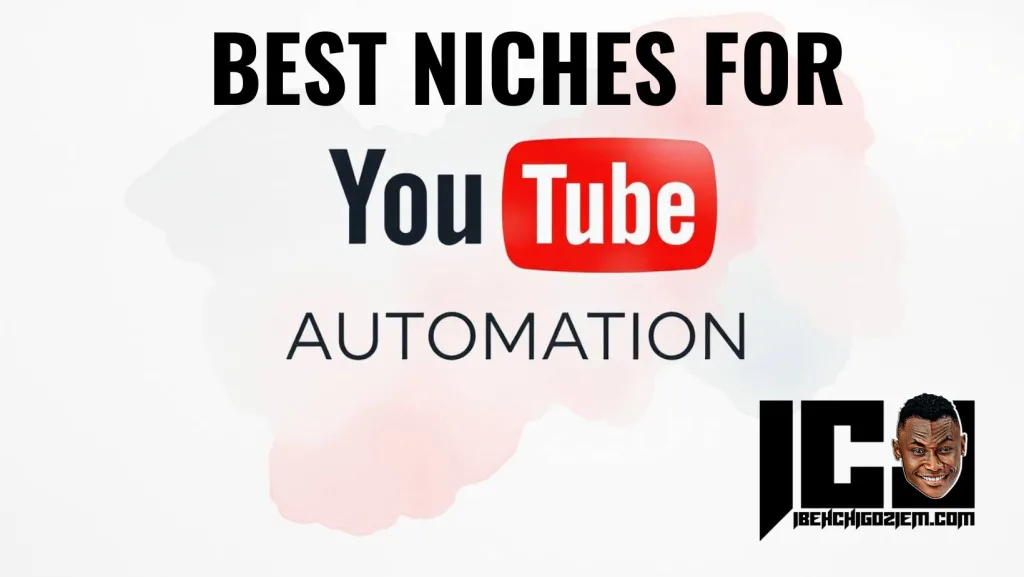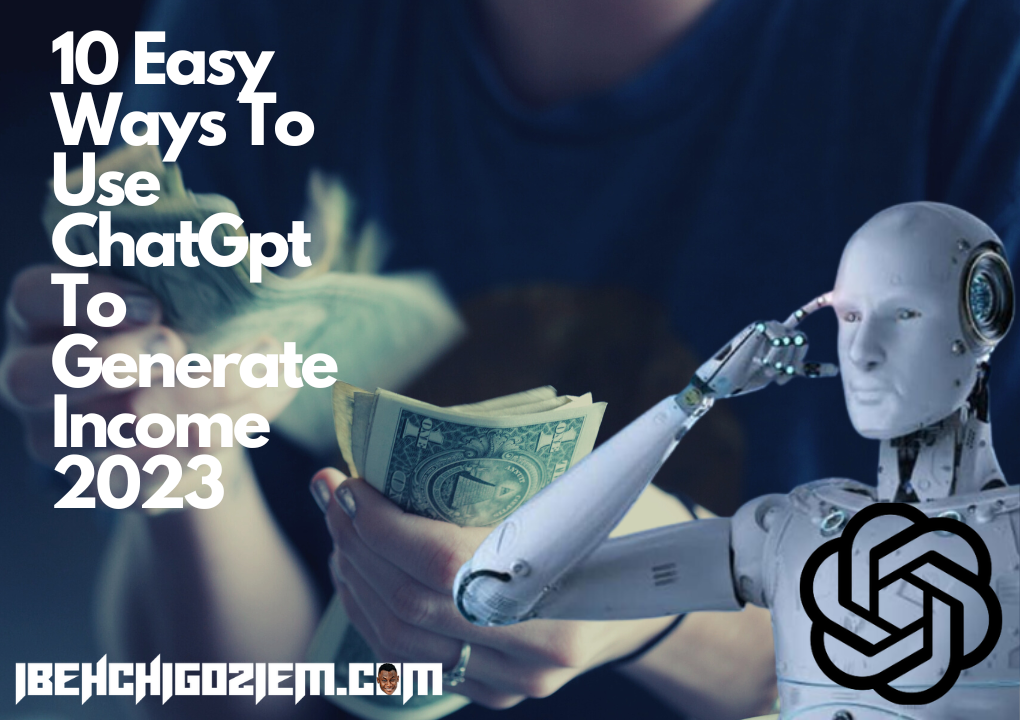10 Best And Most Profitable AI Niches For YouTube Automation 2025
The field of video creation on websites like YouTube is changing yearly and the year 2025 is no different, especially in light of the development of artificial intelligence (AI). In addition to revolutionizing our interactions with digital content, this technology has given producers new opportunities to pursue lucrative niches for better automation on YouTube pages.
What is AI at a glance
Artificial intelligence (AI) is a combination of technologies that allow computers to perform a wide range of advanced operations, such as seeing, understanding, and translating spoken and written language, analyzing data, making suggestions, and so on.
AI is the driving force behind current computing innovation, creating value for both individuals and enterprises. For example, optical character recognition (OCR) use artificial intelligence (AI) to extract text and data from photos and documents, transforming unstructured content into business-ready structured data and providing important insights.
AI and YouTube
AI has made it easier for laymen to make and post videos on YouTube, for instance, if you’re new to YouTube and want to start a channel, AI tools can handle the majority of the work for you, allowing you to make high-quality videos in 10x less time.
AI has significantly transformed YouTube, enhancing both the viewer and creator experience. At the core of YouTube’s functionality, AI powers its recommendation system, analyzing user behaviour, watch history, and interactions to suggest personalized content. This keeps viewers engaged by offering them relevant videos based on their interests.
ALSO, READ Best In-Demand Digital Skills To Learn For 2025 (Estimated Salary)
For content creators, AI has opened up new tools and opportunities. AI-driven video editing software helps automate tasks such as cutting footage, adding effects, and optimizing content for specific audiences. Moreover, YouTube’s automatic captioning and speech recognition features rely on AI, making videos more accessible and discoverable.
AI also plays a critical role in content moderation. YouTube uses machine learning algorithms to flag and remove inappropriate content, such as hate speech, graphic violence, or copyright violations. This helps maintain community guidelines and ensures a safer platform for users.
Additionally, AI enhances targeted advertising on YouTube. By analyzing viewer data, it helps deliver more relevant ads, benefiting advertisers and creators alike.
AI also provides valuable insights into video performance, helping creators optimize their content strategies. As AI technology continues to evolve, its influence on YouTube will only increase, offering more personalized, efficient, and engaging experiences for users and creators alike.
Most people still face the challenge of choosing the most profitable niches which will give them the opportunity of making higher profit.
10 best and most Profitable AI Niches For YouTube Automation

The integration of AI into YouTube automation has opened up numerous profitable niches for content creators and businesses alike. By leveraging AI tools, creators can automate time-consuming tasks, enhance content, and streamline channel management. Here are 10 of the best and most profitable AI niches for YouTube automation
1. AI-Driven Content Creation
AI has revolutionized content creation, especially for creators who want to generate videos on a large scale with minimal effort. Tools like text-to-video AI can help generate content from scripts, articles, or even AI-written stories. By using platforms like Synthesia or Pictory, creators can turn text into engaging videos, complete with AI avatars and voiceovers. This is particularly useful in niches such as:
Educational Content:
AI can produce video tutorials, explainer videos, or course materials automatically.
News and Current Affairs:
AI can aggregate news articles and create summarizing videos, targeting a specific audience.
Product Reviews:
AI can script and automate product review videos for affiliate marketing.
Pros and Cons of AI-Driven Content Creation:
AI-driven content creation is transforming how information is produced and consumed, especially in the AI niche. While it offers significant advantages, it also presents challenges that content creators must consider.
Pros
1. Efficiency and Speed – AI tools can generate high-quality content in minutes, drastically reducing the time needed for research and writing.
2. Scalability – Businesses and creators can scale content production without hiring large teams. AI can write blog posts, video scripts, and reports effortlessly.
3. SEO Optimization – Many AI content tools integrate SEO features, helping optimize keywords, structure, and readability for higher search rankings.
4. Data-Driven Insights – AI can analyze industry trends and audience behaviour, helping create content that is relevant and engaging.
5. Personalization – AI-driven tools can tailor content to specific audience segments, increasing engagement and conversion rates.
Cons
1. Lack of Creativity and Originality – While AI can generate text, it often lacks the human touch, storytelling ability, and deep creativity.
2. Risk of Misinformation
AI relies on existing data, which may be outdated or incorrect, requiring human oversight.
3. SEO Challenges – Search engines like Google are prioritizing human-generated content, and AI-created content may face ranking issues.
4. Bias and Ethical Concerns – AI-generated content may reflect biases present in its training data, potentially leading to misleading or unethical content.
5. Legal and Copyright Issues – AI-generated content may raise intellectual property concerns, especially when it mimics existing work.
What is the Average RPM of AI-Driven Content Creation?
The average RPM (Revenue Per Mille) for automated video editing and AI-related content on YouTube can vary based on factors like audience demographics, ad competition, and content engagement. However, the general estimated RPM for YouTube is $5 – $30+
What is the Average Traffic Potential of AI-driven content creation?
The traffic potential for AI-automated video editing on YouTube is high and rapidly growing. Keywords like “best AI video editor” and “AI video editing tutorial” receive 10K – 500K+ searches per month. Viral AI tool videos can reach millions of views, especially in Shorts. New channels can gain 10K – 100K+ views per video, while established ones can hit 500K – 1M+. Competition is moderate, with strong demand for tutorials, comparisons, and AI vs human editing tests. With proper SEO, trending topics, and engaging content, AI video editing channels can experience significant audience growth and high monetization potential.
ALSO, READ Top 10 Best Character AI (Pros and Cons) 2024
AI-driven content creation is a powerful tool in the AI niche, offering speed, scalability, and efficiency. However, it is good to note that human oversight is essential to ensure accuracy, originality, and ethical use. Balancing AI automation with human creativity will be key to maximizing its benefits.

2. Automated Video Editing
Video editing is a significant part of YouTube content creation, but it’s time-consuming.
AI-powered video editings tools such as Magisto, Adobe Sensei, and Filmora use machine learning algorithms to automate aspects of video production, such as trimming, colour correction, sound enhancement, and even adding effects. Creators can use these tools to streamline their workflow, reducing the time spent on editing, and boosting their overall output.
Profitable Niches
Vlogs and Lifestyle: Channels that upload frequently benefit greatly from automated editing.
Travel or Adventure: With tons of footage to work with, AI can speed up the editing process, making it easier to produce content on the go.
Pros and Cons of Automated Video Editing
Automated video editing is a powerful tool for fast, cost-effective, and scalable content creation, but it falls short in creative flexibility and high-end production quality. Here are the pros and cons of Automated Video Editing
Pros
1. Speed and Efficiency – Automated video editing significantly reduces editing time by applying pre-set templates, AI-driven transitions, and automatic scene detection, allowing for faster content production.
2. Cost-Effective – Eliminates the need for hiring professional editors, making it a budget-friendly option for small businesses, content creators, and social media marketers.
3. User-Friendly – Many automated tools are designed for non-professionals, featuring drag-and-drop interfaces, AI-based suggestions, and minimal learning curves.
4. Consistency – Ensures uniform styles, colours, and transitions across multiple videos, which is useful for branding and marketing campaigns.
5. AI-Powered Enhancements – Some tools use AI to enhance audio, improve video resolution, and even generate subtitles automatically, improving accessibility and engagement.
6. Scalability – Ideal for bulk video production, making it useful for businesses that need to create a large volume of content efficiently.
Cons
1. Lack of Creative Control – Automated systems follow pre-set algorithms, limiting unique and artistic customization that human editors can achieve.
2. Generic Results – Many AI-edited videos can appear formulaic, lacking the originality and emotional depth that manual editing provides.
3. Limited Flexibility – Some software lacks advanced editing features such as complex visual effects, intricate storytelling techniques, or detailed colour grading.
4. Errors and Misinterpretations – AI tools might misinterpret scenes, cut essential parts, or fail to align clips properly with the intended narrative.
5. Quality Variability – Automated editing often struggles with complex projects requiring precision, leading to lower-quality results compared to professional manual editing.
6. Dependency on Software Limitations – Users are restricted to the features and templates provided by the software, which may not always align with their creative vision.
What is the average traffic potential for AI automated Video editing
The average traffic potential for automated video editing depends on search volume, competition, and user interest across platforms.
YouTube videos reviewing AI video editors frequently gain thousands to millions of views, depending on content quality and trends. Social media platforms (TikTok, Instagram, Twitter) also see viral growth, especially for short-form AI-driven content creation.
Hence, with businesses and content creators seeking faster editing solutions, automated video editing tools are in demand. The rise of AI-powered platforms like Runway ML, Descript, and Pika Labs further fuels interest.
Automated video editing has a moderate to high traffic potential, particularly when targeting AI and content creation enthusiasts.
3. AI-Powered Thumbnail and Title Optimization
AI tools that optimize video thumbnails and titles can significantly increase a video’s click-through rate (CTR). Tools like TubeBuddy or Canvas AI-powered features can help creators design high-converting thumbnails. Additionally, AI algorithms analyze trends and keywords to generate title suggestions that are more likely to rank well in YouTube’s search and recommendations.
In the competitive world of YouTube, grabbing viewers’ attention is crucial. AI-powered thumbnail and title optimization has revolutionized YouTube automation by maximizing click-through rates (CTR) and engagement. By leveraging AI tools, creators can generate high-performing thumbnails and titles that appeal to their target audience, leading to better video rankings and increased views.
AI-driven tools can analyze successful video thumbnails in a niche and generate eye-catching designs. These tools use machine learning to suggest the best colours, fonts, and facial expressions that boost engagement. They can even test different variations to determine which performs best. Some AI platforms can automatically remove backgrounds, enhance images, and add compelling visual elements.
AI tools analyze trending keywords, search intent, and viewer behavior to generate highly optimized YouTube titles. They can suggest power words, emotional triggers, and formatting techniques that improve CTR.
Profitable Niches
Gaming
AI tools can analyze successful gaming videos and recommend titles and thumbnails that attract viewers.
Tech and Gadgets
Optimizing thumbnails and titles for product reviews or tech tutorials can drive higher traffic.
Pros and cons of AI-Powered Thumbnail and Title Optimization for YouTube Automation.
AI-powered thumbnail and title optimization is becoming an essential part of YouTube automation, helping creators maximize their video reach and engagement. Here’s a breakdown of the pros and cons:
Pros
1. Increased Click-Through Rate (CTR) – AI can analyze trends and user preferences to create eye-catching thumbnails and compelling titles that attract more clicks.
2. A/B Testing Automation AI can test multiple versions of thumbnails and titles to determine which one performs best, optimizing for engagement.
3. Data-Driven Decisions – AI tools analyze vast amounts of data, including audience behavior, to suggest titles and thumbnails that align with current trends.
4. Saves Time and Effort Instead of manually brainstorming, designing, and testing, creators can use AI to generate and optimize thumbnails/titles in seconds.
5. Consistency in Branding – AI ensures consistency in style, color schemes, and elements, helping build a recognizable channel identity.
6. Adaptation to Algorithm Changes – AI tools continuously update based on YouTube’s algorithm changes, ensuring optimized content strategies.
7. SEO Optimization – AI suggests keywords and phrases that improve video discoverability in search results.
Cons:
1. Lack of Creativity & Human Touch – AI-generated thumbnails and titles may lack the originality or emotional appeal of human-made ones.
2. Generic Suggestions – AI tools may produce repetitive or overused formats that could make content feel less unique.
3. Dependence on AI – Over-reliance on AI may reduce a creator’s ability to innovate and manually test unique strategies.
4. Algorithm Bias & Misinterpretation – AI may prioritize engagement metrics over authenticity, leading to clickbait-style recommendations.
5. Costs & Subscription Fees – Advanced AI tools for YouTube automation often come with a price tag, which may not be feasible for small creators.
6. Limited Context Awareness – AI might not fully grasp the nuances of humor, sarcasm, or cultural trends, leading to titles or thumbnails that don’t resonate as intended.
7. Risk of Over-Optimization – AI-driven thumbnails and titles may prioritize short-term engagement over long-term audience trust if they lean towards misleading or exaggerated content.
4. AI-driven SEO and Video Optimization
SEO is crucial for YouTube success, and AI tools like VidIQ, TubeBuddy, and Morningfame can help automate the process. These tools analyze YouTube’s search algorithm, identify trending keywords, and suggest optimal tags and descriptions. Using AI, creators can fine-tune their videos to rank better in search results, resulting in more organic views.
Pros and Cons of AI-Driven SEO and Video Optimization for YouTube Automation
AI-driven SEO and video optimization are transforming YouTube automation, offering efficiency and improved visibility. However, they also come with challenges.
Pros
1. Increased Efficiency – AI automates keyword research, title generation, and metadata optimization, reducing manual workload.
2. Improved Video Ranking – AI tools analyze search trends and audience behaviour to optimize content for better YouTube rankings.
3. Automated Content Creation – AI can generate scripts, captions, and even voiceovers, streamlining production.
4. Enhanced Audience Targeting – AI analyzes user preferences, ensuring videos reach the right audience.
5. Data-Driven Insights – AI tracks performance metrics like watch time, engagement, and click-through rates, refining content strategies.
6. Consistency and Scalability – AI ensures regular uploads and content scheduling, essential for channel growth.
Cons
1. Lack of Creativity and Originality – AI-generated content may lack a human touch, making videos feel generic or robotic.
2. Algorithm Dependency – Relying too much on AI can be risky, as YouTube’s algorithms frequently change.
3. Over-Optimization Risks -AI-driven keyword stuffing or excessive automation might lead to content being flagged as spam.
4. Quality Concerns – AI-generated scripts and voiceovers may not always match human-created content in engagement.
5. Copyright and Ethical Issues – AI tools may pull content from existing sources, leading to potential plagiarism concerns.
6. Cost of AI Tools – Advanced AI-driven optimization tools often come with high subscription fees, which can be a burden for small creators.
Average traffic potential of AI-driven SEO and Video Optimization for YouTube Automation
The average traffic potential of AI-driven SEO and video optimization for YouTube automation varies based on factors such as niche, competition, and content quality.
Hence, with proper optimization, AI-powered strategies can significantly boost trafficWith AI-driven SEO and automation, a well-optimized YouTube channel can experience 2x to 5x growth in traffic compared to non-optimized channels.
Despite all these, success still depends on high-quality content and audience engagement.
5. Automated Audience Engagement and Comment Moderation
Engaging with viewers is key to building a successful YouTube channel, but managing large volumes of comments can be overwhelming.
AI-driven tools like ChatGPT or Jasper can help generate responses to common questions or comments, fostering a sense of community. Additionally, AI can automatically moderate comments, removing spam or inappropriate content, which ensures a positive user experience.
Pros and Cons of Automated Audience Engagement and Comment Moderation for YouTube Automation
AI-driven automation for audience engagement and comment moderation offers efficiency but also presents challenges.
Pros
1. Saves Time – AI automatically replies to comments, likes interactions, and moderates discussions, reducing manual effort.
2. Boosts Engagement – Automated responses ensure every comment gets attention, increasing audience interaction.
3. Spam and Hate Speech Filtering – AI detects and removes offensive or spammy comments, maintaining a positive community.
4. Scalability – Handles thousands of comments efficiently, essential for growing channels.
5. Sentiment Analysis – AI identifies audience sentiment, helping creators refine their content strategy.
6. Consistency – Ensures regular interaction, even when the creator is unavailable.
Cons
1. Lack of Personal Touch – AI-generated replies may feel robotic, reducing authenticity.
2. Context Misinterpretation – AI may misread sarcasm, jokes, or nuanced comments, leading to inappropriate responses.
3. Over-Moderation Risks – Useful comments might be mistakenly flagged as spam.
4. Algorithm Limitations – AI may not understand evolving slang or cultural references.
5. Viewer Backlash – Automated replies can make audiences feel disconnected.
6. Subscription Costs – Advanced AI tools may be expensive for small creators.
6. AI for Music and Sound Design

AI tools for music composition, such as Amper Music and Aiva, can create background scores, sound effects, or even jingles for YouTube videos. Music creators can use AI to automate the music creation process, making it easier to produce original tracks without needing advanced musical expertise.
Pros and Cons of AI for Music and Sound Design in YouTube Automation
AI-generated music and sound design can streamline content creation, but it has limitations.
AI enhances efficiency in music production for YouTube automation but lacks human creativity, making a hybrid approach ideal
Pros
1. Cost-Effective – AI tools create royalty-free music, reducing licensing expenses.
2. Time-Saving – AI generates background music and sound effects instantly, speeding up production.
3. Customization – AI allows users to adjust mood, tempo, and style to match video themes.
4. Scalability – AI can produce unlimited variations for different content needs.
5. No Copyright Issues – AI-generated music avoids copyright claims, ensuring monetization.
Cons
1. Lack of Originality – AI music can sound generic or repetitive.
2. Limited Emotional Depth – AI struggles to replicate human-composed music’s emotional nuances.
3. Creativity Constraints – AI-generated sounds may lack unique artistic expression.
4. Quality Variations – Some AI compositions may not meet professional standards.
5. Algorithm Dependency – Over-reliance on AI can limit innovation in sound design.
7. AI in Analytics and Performance Tracking
AI-driven analytics tools like Social Blade and TubeBuddy help creators track the performance of their videos, understand audience demographics, and optimize content strategies. By analyzing trends and engagement patterns, creators can adjust their content to suit viewer preferences, improving overall channel performance.
Pros and Cons of AI in Analytics and Performance Tracking for YouTube Automation
AI-powered analytics tools help YouTube creators track performance and optimize content, but they also have limitations.
Pros
1. Data-Driven Insights – AI analyzes watch time, engagement, and audience retention, providing actionable insights.
2. Predictive Analytics – AI forecasts video performance, helping creators refine their strategies.
3. Automated Reports – AI generates detailed reports, saving time on manual analysis.
4. Audience Behavior Analysis – AI tracks viewer demographics, preferences, and habits for targeted content.
5. Competitor Analysis – AI compares performance with competitors, offering growth opportunities.
6. SEO Optimization Suggestions – AI recommends keywords, video titles, and descriptions to improve rankings.
Cons
1. Over-Reliance on Data – AI focuses on numbers but may overlook creative aspects.
2. Algorithm Limitations – AI predictions can be inaccurate due to changes in YouTube’s algorithm.
3. Privacy Concerns – Some AI tools require access to sensitive audience data.
4. Complexity – Advanced AI analytics tools may require technical expertise.
5. Subscription Costs – High-quality AI tracking tools can be expensive.
8. Automated Voiceovers and Speech Synthesis
AI tools like Google’s WaveNet or Amazon Polly can generate realistic voiceovers, which is particularly useful for creators who may not have access to professional voice talent. These tools can read scripts in various voices and languages, opening up opportunities for global reach without the need for additional voiceover work.
Pros and Cons of Automated Voiceovers and Speech Synthesis for YouTube Automation
AI-powered voiceovers and speech synthesis offer efficiency for YouTube automation but have some drawbacks.
Pros
1. Time-Saving – AI-generated voiceovers eliminate the need for manual recording and editing.
2. Cost-Effective – No need to hire voice actors, reducing production expenses.
3. Multiple Voice Options – AI offers various tones, accents, and languages for diverse content.
4. Scalability – AI-generated voices can quickly produce content for multiple videos.
5. Noise-Free Output – No background noise or recording errors, ensuring clear audio quality.
Cons
1. Lack of Emotion – AI-generated voices may sound robotic or unnatural.
2. Limited Customization – AI may struggle with unique inflexions, pauses, or emphasis.
3. Audience Disconnection – Viewers may prefer real human voices for authenticity.
4. Quality Variability – Some AI voices still sound synthetic or repetitive.
5. Copyright & Ethical Concerns – AI-generated voices may raise ethical issues in voice cloning.
Average traffic potential of Automated Voiceovers and Speech Synthesis for YouTube Automation
The average traffic potential of YouTube channels using automated voiceovers and speech synthesis depends on niche, content quality, and SEO optimisation voiceovers can increase scalability and traffic but may limit engagement. A hybrid approach, combining AI with human elements, often yields better long-term results.
9. Health and Fitness
This niche is evergreen, with a large audience always looking for ways to improve their well-being.
YouTube automation (faceless YouTube channels) in the Health & Fitness niche can be very profitable if done correctly. This approach involves outsourcing content creation (scriptwriting, voiceovers, video editing) while focusing on growth and monetization.
Pros and cons of Health & Fitness YouTube Automation
Pros
1. Evergreen & High Demand – People constantly seek fitness tips, workout routines, and weight loss advice, ensuring long-term content relevance.
2. Multiple Monetization Streams – You can earn through YouTube ads, affiliate marketing (supplements, workout gear, apps), sponsorships, and selling digital products like fitness guides.
3. Scalability & Automation – You can outsource tasks like scriptwriting, voiceovers, and video editing, allowing for efficient content production. AI tools also streamline content creation.
4. Potential for Viral Content – Fitness challenges, before-and-after transformations, and quick-fix videos (e.g., “Lose 10 lbs in 2 Weeks”) often gain massive engagement.
5. Faceless & Passive Income Potential – No need to show your face, and once a video ranks, it can generate passive income for years.
Cons
1. Strict YouTube Guidelines – Misinformation on health, extreme weight loss claims, or misleading advice can lead to demonetization or video removal.
2. High Competition – Many fitness influencers dominate the niche, making it hard to stand out without unique, high-quality content.
3. Generic Stock Footage – Repetitive visuals can make videos less engaging unless combined with animations and better editing.
4. Consistency is Key – Growing a channel requires frequent uploads (3-5 videos per week), which can be costly if outsourcing.
Average traffic potential of Health & Fitness for YouTube Automation
The Health & Fitness niche on YouTube has high traffic potential, with top channels gaining millions of views. Popular creators like Tibo InShape and Sam Sulek average over 100K views per video. Health-related content attracts 87.6% of viewers, with many making decisions based on it. Monetization is strong, with some channels earning up to $59K monthly.
For automation, success depends on content quality, SEO, and engagement. While new channels may start slow, consistent, valuable content can drive significant traffic. Leveraging trends, AI voiceovers, and optimized thumbnails can enhance visibility and growth in this competitive but rewarding niche.
10. self-improvement and motivation
The Self-Improvement and Motivation niche on YouTube is ideal for automation, with high engagement and evergreen content. Channels like Improvement Pill and Better Ideas attract millions of views by sharing productivity tips, success stories, and motivational speeches. Automated content, such as AI voiceovers, stock footage, and text-based storytelling, performs well. SEO optimization and compelling thumbnails boost traffic. Monetization includes ads, sponsorships, and affiliate marketing. Since viewers actively seek inspiration, retention rates are high. By consistently delivering value-driven content, an automated channel in this niche can grow rapidly, making it a profitable and scalable YouTube business opportunity.
Pros and Cons of Self-Improvement and Motivation for YouTube Automation
Pros:
1. High Demand & Evergreen Content – Self-improvement and motivation are always relevant, ensuring consistent audience interest. Videos on productivity, mindset, and success strategies remain valuable for years.
2. Broad Audience Appeal – This niche attracts a global audience, including students, professionals, and entrepreneurs, increasing potential viewership and engagement.
3. Easy to Automate – Content can be created using AI voiceovers, stock footage, motion graphics, and text-based storytelling, reducing the need for on-camera presence.
4. Multiple Monetization Options – Revenue streams include YouTube ads, sponsorships, affiliate marketing, digital product sales (e-books, courses), and membership programs.
5. Strong Engagement & Retention – Motivational content often sparks discussions in the comments and encourages repeat viewers, leading to higher watch time and YouTube algorithm promotion.
6. SEO-Friendly & Shareable – Motivational videos frequently get shared on social media and rank well on search engines with the right keywords and thumbnails.
Cons
1. High Competition – Many established channels dominate this niche, making it harder for new channels to stand out without unique content strategies.
2. Algorithm Dependency – Success relies on YouTube’s algorithm. If a video doesn’t gain traction, it may struggle to reach a wider audience.
3. Content Repetition – Many self-improvement topics are saturated. Without fresh angles or unique presentation styles, content may feel repetitive.
4. Monetization Delays – YouTube requires 1,000 subscribers and 4,000 watch hours for monetization, which may take time to achieve.
5. Emotional Connection Needed – Audiences resonate more with personal stories and genuine emotions, which can be difficult to replicate in fully automated videos.
Average Traffic Potential of Self-Improvement and Motivation for YouTube Automation
The Self-Improvement and Motivation niche has strong traffic potential due to its evergreen nature and wide audience appeal. Many channels in this space attract millions of views, especially when videos are well-optimized for SEO and engagement.
With consistency and strategic optimization, an automated self-improvement channel can attract high traffic and long-term growth, making it a profitable YouTube niche.
Conclusion
AI offers a wide array of opportunities to automate and optimize YouTube content creation. By integrating AI tools into different aspects of video production—from content creation and editing to SEO and audience engagement—creators can scale their channels more efficiently and profitably.
In niches like education, tech, gaming, and lifestyle, AI can not only help with automation but also enhance the quality and discoverability of content, ensuring long-term success.


